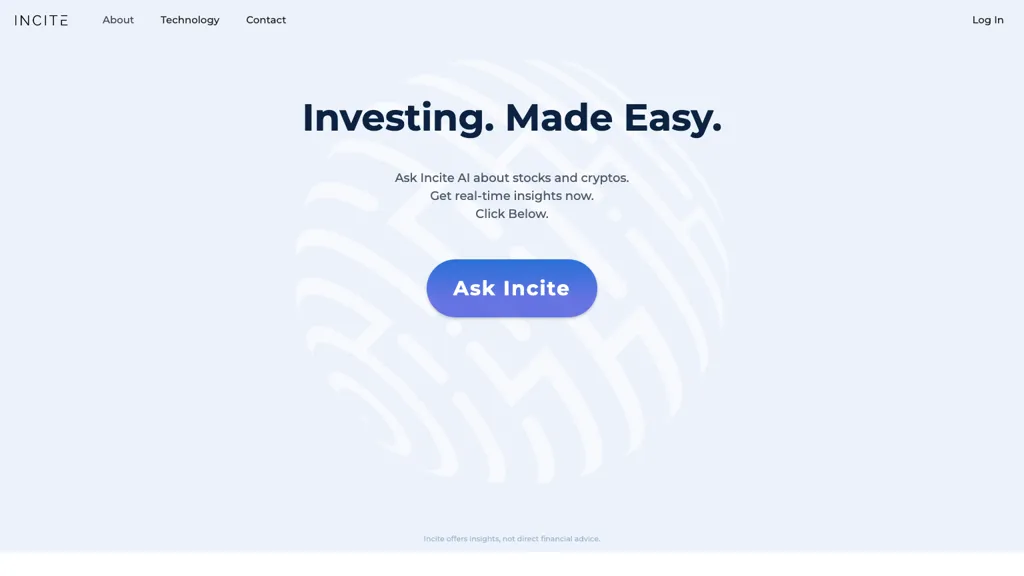20 Free Suggestions To Choosing AI Stock Investing Platform Sites
20 Free Suggestions To Choosing AI Stock Investing Platform Sites
Blog Article
Top 10 Tips To Evaluate The Market Coverage Provided By Ai-Based Stock Predicting/Analyzing Platforms
When evaluating AI trading platforms that can predict or analyze markets, market coverage is a key aspect to think about. It determines what types of assets and markets are accessible. Platforms with extensive market coverage let you diversify your portfolio and explore opportunities across the globe and also adapt to various trading strategies. These are the top 10 tips to assess the market cover of these platforms.
1. Evaluate Supported Asset Classes
Stocks: Ensure that your platform is compatible with major stock exchanges, including NYSE, NASDAQ LSE and HKEX, and that it includes small, mid and large caps.
ETFs: Check if the platform can support a broad variety of ETFs that offer a wide exposure to regions, sectors or themes.
Options and futures. Make sure the platform has derivatives such as options, futures and other instruments that leverage.
Forex and commodities: Assess if the platform includes forex pairs and precious metals, energy commodities and agricultural products.
Cryptocurrencies. Verify if the currency supports the major altcoins and cryptocurrencies (e.g. Bitcoin, Ethereum).
2. Check the Geographic Coverage
Global markets. Ensure your platform covers the major global market, such as North America Europe Asia-Pacific and emerging countries.
Regional focus: Find out whether your platform has a particular area of focus or market that matches with your trading needs.
Local exchanges. Find out whether the platform permits regional or local exchanges that are relevant to your geographical location or business strategy.
3. Delayed Data Vs. Delayed Data
Real-time Data: Be sure that the platform provides real-time data for trading and to make timely decisions.
Data delayed: Find out whether you can obtain delayed data for free or at a reduced cost. This might be enough for investors who are looking to invest long-term.
Data latency - Verify that the platform reduces delay of feeds that are real-time. This is especially important for traders who trade high-frequency.
4. Evaluate Historical Data Availability
The depth of historical data Check that the platform provides extensive data (e.g. over 10 years old) to backtest.
Granularity: Check whether the historical data contains intraday granularity, as well with weekly, daily and monthly.
Corporate actions: Confirm that the historical data taken into account stock splits (if applicable), dividends and other corporate action.
5. Make sure to check the market depth and place an order Books
Data Level 2: Ensure the platform offers Level 2 (order book depth), for better price discovery.
Verify that your platform is displaying real-time price spreads.
Volume data: Make sure that the platform offers comprehensive volume data to study market liquidity.
6. Examine the extent of coverage for Indices and Sectors
Major indices - Ensure your platform works with major indexes such as S&P 500 and FTSE 100 for benchmarking.
Sector-specific data: Find out whether the platform offers data specific to certain industries (e.g. technology health, energy, etc.)) to conduct a targeted analysis.
Custom-made indices: Find out if the platform allows the creation of or tracking of custom indices that meet your criteria.
7. Evaluate integration with News and Sentiment
News feeds: Make sure that the platform incorporates live feeds of news from reputable sources, such as Bloomberg and Reuters in the case of market-moving events.
Sentiment analysis Check to see if your platform has sentiment analysis tools that use data from news, social media, sources, or any other data source.
Strategies that are based on events (e.g. economic announcements, earnings announcements) Verify if your platform supports trading strategies that rely on events.
8. Verify Multi-Market Capabilities for Trading
Cross-market Trading: Verify that the platform you are using allows traders to trade across a variety of market segments and asset classes using an integrated interface.
Conversion to currencies: Make sure the platform supports multi-currency as well as automatic conversion of currencies for international trading.
Time zone support: Check whether the platform allows trading in various time zones that are used for trading on global markets.
9. Check the coverage of other data sources
Find alternative sources of data.
ESG data: Determine whether the platform offers environmental, social and governance (ESG) information to help investors make socially responsible decisions.
Macroeconomic Data: Make sure that the platform has macroeconomic indicators like inflation, GDP and interest rates.
Review customer feedback and market Reputation
Feedback from users is an excellent way to evaluate the market coverage of a platform.
Industry reputation Know whether there are any prizes or experts who acknowledge the platform for its broad coverage of markets.
Case studies and testimonials: These will highlight the performance of the platform in particular market segments or asset classes.
Bonus Tips
Free trial period: Test the market coverage of the platform as well as the quality of its data with a demo or free trial.
API access Make sure to check if the API of the platform supports custom analysis by using market data.
Customer support. Make sure that the platform can provide support in relation to data or market queries.
Use these guidelines to assess the market coverage provided by AI stock trading platforms. Choose a platform with access to the markets, information and tools you need to make trading successful. A comprehensive market coverage allows you to diversify and expand the possibilities of your portfolio. It also helps you adjust to changes in the market. Follow the most popular here about ai stock trading for blog advice including best ai stock, ai investing platform, ai chart analysis, incite, stock ai, ai stock trading bot free, ai investment app, ai for investing, best ai for trading, ai trading and more.
Top 10 Tips For Assessing The Quality And Reliability Of Ai-Based Stock Trading Platforms
In order to ensure that AI-driven prediction platforms and trading platforms are able to handle the growing volume of data, user demands, and market complexity, it is vital to determine their capacity. Here are the top 10 suggestions for evaluating the scalability.
1. Evaluate Data Handling Capacity
Tips: Make sure that the platform is able to process and analyse large data sets.
Why: A platform that is scalable must be capable of handling the increasing data volume without performance degradation.
2. Test Real-Time Processing Capabilities
Check out how well your platform is able to handle streaming data in real time including live stock quotes or breaking news.
What's the reason? The analysis in real-time of trading decisions is crucial because delays could lead you to missing opportunities.
3. Cloud Infrastructure Elasticity and Check
Tip: Check if your cloud platform (e.g. AWS, Google Cloud or Azure) and has the ability to dynamically scale resources.
Why is that the cloud platform's elasticity allows the size of the system to alter based on the usage.
4. Algorithm Efficiency
Tip: Evaluate the computational efficiency of the AI models (e.g., deep learning, reinforcement learning) employed to predict.
Reason: Complex algorithms can be resource-intensive, and optimizing them is essential to scaling.
5. Explore the possibilities of Parallel Processing and distributed computing
Check whether the platform utilizes parallel computing or distributed computing frameworks.
Why? These technologies can help speed data processing across several nodes.
Review API Integration.
Test the platform’s ability to connect external APIs.
Why: Seamless platform integration allows it to adapt to new sources of data or trading environment.
7. Analyze User Load Handling
Try simulating traffic volumes that are high to determine how your platform will perform.
Why? A scalable platform has to maintain its performance as the number of users increases.
8. Review the Model Retraining Adaptability
TIP: Check how often AI models can be trained on new data.
What's the reason? As markets shift, models must be updated frequently to stay precise.
9. Verify Fault Tolerance and Redundancy
Tip: Ensure the platform has failover mechanism and redundancy in case of hardware or software issues.
Why: Downtime can be expensive for traders, and the ability to tolerate faults is crucial to allow for the ability to scale.
10. Monitor Cost Efficiency
Tip: Analyze the cost of scaling the platform, which includes cloud resources, storage for data, and computing power.
It's crucial to keep a balanced equilibrium between the performance costs and expenses.
Bonus tip Future-proofing
Ensure the platform is built to take advantage of new technologies (e.g. quantum computing or advanced NLP) and adapt to regulatory changes.
It is possible to assess the capacity and effectiveness of AI trading and stock prediction platforms by focusing on this particular aspect. This will help ensure that they're effective and robust, capable of growing. Follow the most popular full article about ai software stocks for site tips including how to use ai for stock trading, ai stock investing, ai trading tool, ai copyright signals, ai stock trader, ai options, ai investment tools, invest ai, ai stock trader, best ai penny stocks and more.